Related Research Articles
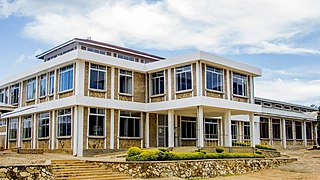
Iringa Region is one of Tanzania's 31 administrative regions. The region covers an area of 35,503 km2 (13,708 sq mi). The region is comparable in size to the combined land area of the nation state of Guinea Bissau. Iringa Region is bordered to the east by Morogoro Region and south by Njombe Region. On the west the region is bodered by Mbeya Region. Dodoma Region and Singida Region border Iringa on the north. The regional capital is the city Iringa for which the city is named after. According to the 2012 census, the region has a total population of 941,238. Iringa Region is home to Ruaha National Park, Tanzania's second national largest park.
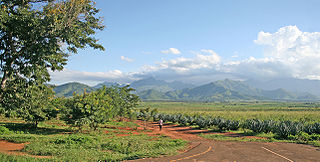
Morogoro Region is one of Tanzania's 31 administrative regions. The region covers an area of 70,624 km2 (27,268 sq mi). The region is comparable in size to the combined land area of the nation state of Ireland. Morogoro Region is bordered to the north by the Manyara Region and Tanga Region, to the east by the Pwani and Lindi Regions, to the south by the Ruvuma Region and to the west by the Iringa Njombe and Dodoma Regions. The regional capital is the municipality of Morogoro. According to the 2012 national census, the region had a population of 2,218,492.
Gogo is a Bantu language spoken by the Gogo people of Dodoma Region in Tanzania. The language is spoken throughout Dodoma Region and into the neighbouring district of Manyoni.
The Wanji are an ethnic and linguistic group native to Makete District, in the Kipengere Mountains of Njombe Region and also native to Mbeya Region in southern Tanzania. In 2003 the Wanji population was estimated to number 28,000. The wanji language is the composition of nearby languages like Sangu, Kinga, Nyakyusa, Safwa and Bena.
The Pangwa are a Bantu ethnolinguistic group based in the Kipengere Range on the eastern shore of Lake Malawi, in the Ludewa District of Njombe Region in southern Tanzania. In 2002 the Pangwa population was estimated to number 95,000. The Pangwa language is a member of the Bantu family.
Bena can refer to:
The Ndamba are an ethnic and linguistic group based in south-central Tanzania whose population was 79,000 in 1987. They are found in everywhere in Tanzania especially south central, the Kilolo District of Iringa Region, northeast of Bena, southeast of Hehe, west of Pogolo and southwest of Mbunga.
The Magoma are a Bantu ethnolinguistic group based in the Makete District of Njombe Region in southern Tanzania. In 2003, the Magoma population was estimated to number 9,000.
The Kisi are a Bantu ethnolinguistic group from Makete District of Njombe Region, Tanzania, on the northwestern shore of Lake Malawi. In 2001 the Kisi population was estimated to number 18,000, of whom 10,200 spoke the Kisi language. They began using the Nyakyusa language as a second language only in 1900.

The following outline is provided as an overview of and topical guide to Tanzania:
Bena is a Bantu language spoken by the Bena people of the Iringa region of Tanzania.
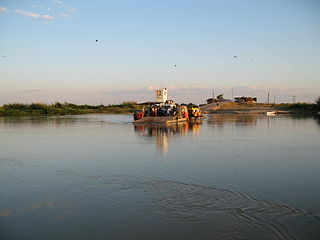
The Ulanga River, also known as the Kilombero River, rises in the highlands of the southwest of Morogoro Region, Tanzania, on the eastern slope of the East African Rift. The river flows northeast along the northeastern border of the Lindi Region before it flows into the Rufiji River. The Rufiji eventually flows into the Indian Ocean on the southern coast of the Pwani Region.
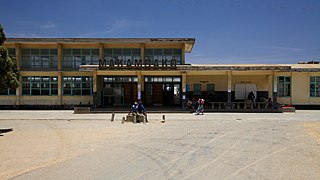
Makambako is a medium-sized town and district in the Njombe Region of the Tanzanian Southern Highlands, located roughly 40 miles north of Njombe city by road. It is located at junction of the A104 and B4 roads between Njombe, Iringa, and Mbeya. Its population according to the 2002 Tanzanian census was 51,049.
Martha Mvungi, née Martha V. Mlangala is a Tanzanian writer in both Swahili and English.
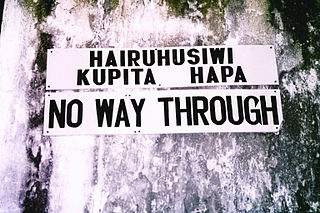
Tanzania is a multilingual country. There are many languages spoken in the country, but no one language is spoken natively by a majority or a large plurality of the population. Swahili and English, the latter of which was inherited from colonial rule, are widely spoken as lingua francas. They serve as working languages in the country, with Swahili being the official national language. There are more speakers of Swahili than of English in Tanzania.
Kifanya is a town and ward in Njombe Urban District in the Njombe Region of the Tanzanian Southern Highlands.

Ulanga District is one of the six districts of the Morogoro Region of Tanzania. the administrative seat is in Mahenge. It covers 24,460 square kilometres (9,444 sq mi) of which 4,927 square kilometres (1,902 sq mi) is in forest reserves. Ulanga District is bordered to the north and west by the Kilombero District, to the east by the Lindi Region and to the south by the Ruvuma Region.

Njombe Region is one of Tanzania's 31 administrative regions. The region covers a land area of 21,347 km2 (8,242 sq mi). The region is comparable in size to the combined land area of the nation state of El Salvador. Njombe Region is bordered to the north by the Iringa Region and Mbeya Region, to the east by Morogoro Region, to the south by the Ruvuma Region and to the west by Lake Nyasa. The regional capital is the municipality of Njombe. According to the 2012 national census, the region had a population of 702,097.
Nyumbanitu is a forest near the village of Mlevela, Mdandu ward in Wanging'ombe district of Tanzania's Njombe Region. It is at a distance of 15 km from Njombe Town.
References
- ↑ "Tanzania | Ethnologue".
- ↑ Culwick, G. M. (November 1935). "Pottery Among the Wabena of Ulanga, Tanganyika Territory". Man. 35 (184–185): 165–169. doi:10.2307/2789855. JSTOR 2789855.